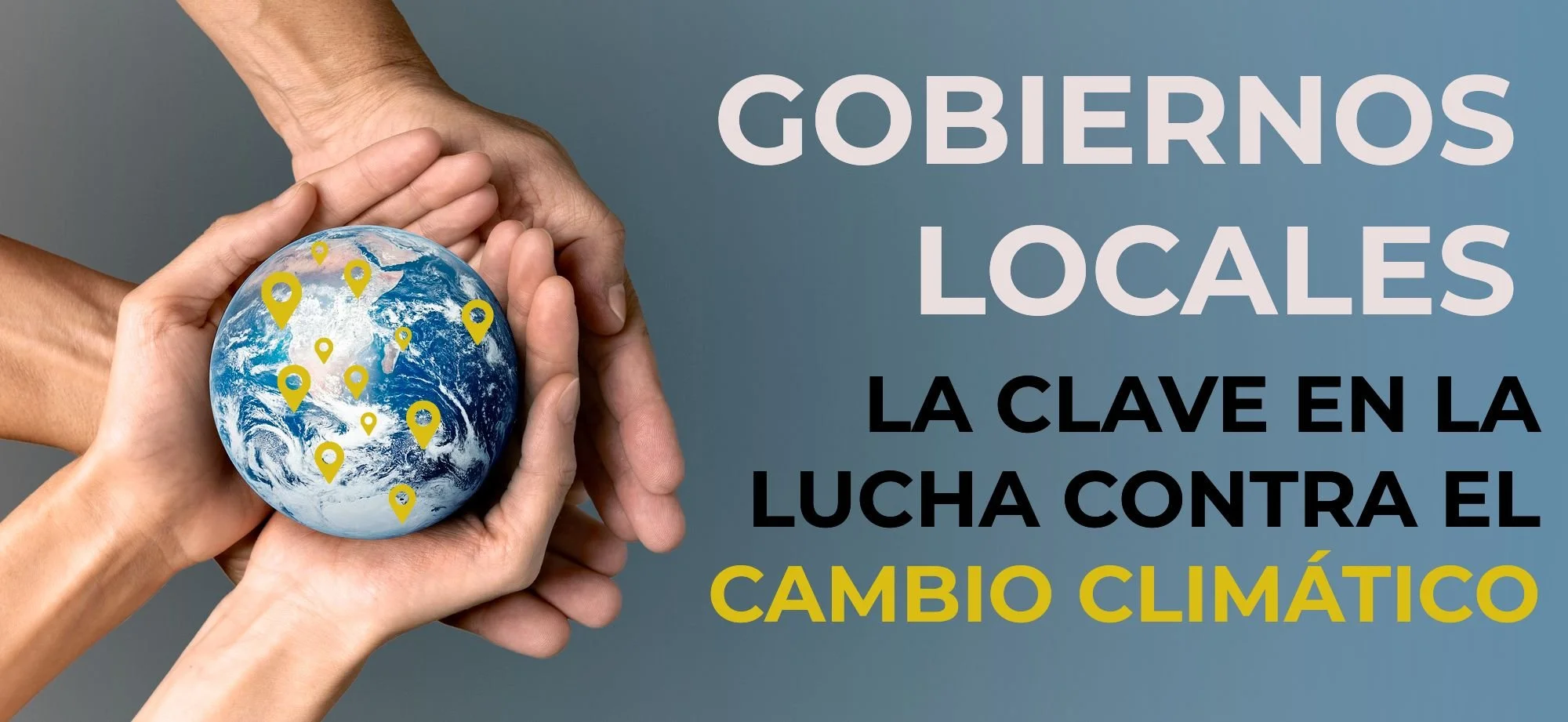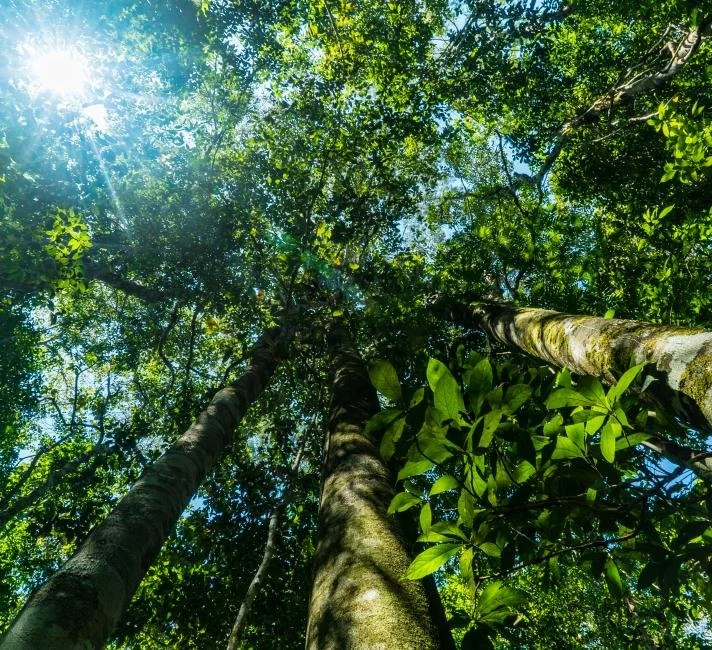In the midst of the current NATO-Russia conflict and the military situation in Ukraine, and as if that were not enough, after two long years of the global SARS-COV 2 Pandemic, it is important that we place these serious human problems within a broader perspective, that is linked to the rights of life of the terrestrial Ecosphere. Something very necessary to become aware of the path we take as humanity and as a relevant species in the balance and subsistence of life on our planet.
Life of the Terrestrial Ecosphere: it is the totality of the biodiversity that exists, mainly, in a thin layer of planet Earth that extends from the lowest level of the ground to the highest part of the canopy of trees or vegetation that rises above the surface of the earth, as well as the highest part (approximately 200 meters) of all the oceans. It has a maximum thickness of 200 meters, but on average it is 50 meters. Compared to the thickness of the planet, it is an extremely thin layer, almost imperceptible.
We prefer to use the concept of Ecosphere than that of biosphere, to the extent that the first meaning includes the interactions of the layer that contains life with other layers of the Earth, such as the upper part of the Earth's crust that includes elements such as the mantles groundwater, geothermal energy, sources of volcanic activity and, above all, tectonic elements that include active geological faults and sources of seismicity. In addition, the interaction of the biosphere with the atmosphere and climate and weather conditions are also included.
The life of the terrestrial Ecosphere encompasses all its biodiversity, that is, the entire enormous and multiverse set of species of vegetation, birds, fungi, insects, arachnids, unicellular organisms, microorganisms, mammals, amphibians, reptiles, etc. However, it is not only about the organisms that exist today, but also all the species that have existed in the history of life on Earth and that covers an enormous time period of about 4 billion years.
The life of the terrestrial Ecosphere, despite being so fragile, has enormous resilience. It has endured at least six major massive extensions. Some of them have eliminated up to 90% of life on Earth. However, life on the planet has resurfaced and although some species disappeared forever, new species emerged and populated the planet.
The problem that we humans must understand about extinctions is that the recovery of life on the planet takes hundreds of thousands or millions of years. A very, very long time that the human species could not survive. In short, in a new mass extinction the human species could not survive. A very serious statement, to the extent that scientific studies indicate that we are already within a great mass extinction that began just over 200 years ago.
Rights of the terrestrial ecosphere life: the life of the terrestrial Ecosphere does not exist thanks to humans, it is quite the opposite, the human species is a product of the evolution of the life of the terrestrial Ecosphere. This being the case and given the enormous complexity of that life and the real fact that life in the known Universe is not common, ( despite the efforts of decades, it has not yet been possible to find it even as fossil life), it is clear that the life and biodiversity that the terrestrial Ecosphere harbors has an important and inescapable right to exist.
It goes without saying that the survival of the human species directly depends on that existence, since it is that life, both in the soil and in the seas and forests, that feeds us and without it we could not exist as humanity. Moreover, the balance of this life is one that our state of health depends on. Diseased and contaminated ecosystems can be sources of serious pests capable of damaging the health of the entire human species, such as the SARS COV 2 Pandemic itself and others that have existed in the past.
Deterioration of the life of the terrestrial Ecosphere: in previous writings (www.allan-astorga.com) we have presented extensive arguments to show the serious situation of deterioration that the life of the terrestrial Ecosphere has suffered. Since the beginning of the industrial age approximately 210 years ago, a growing predatory process of nature began. This has led to a very critical situation, due to the cumulative and ubiquitous effect of human activities throughout the world.
The vast majority of the balance indicators of the terrestrial Ecosphere are in a state of danger and some of them are in the risk zone or very close to it. The matter is not only about the increase in the temperature of the atmosphere due to Climate Change, but about: deterioration and loss of soils, accelerated loss of biodiversity in forests and seas, contamination of waters and aquifers, overexploitation of the oceans, among others.
The situation is so serious and dangerous for the future life of the terrestrial Ecosphere and of humanity itself, that it is comparable to the extinction level of meteorite impact like the one that eliminated the dinosaurs and other species 65 million years ago. The main difference with that situation is that in the few years that remain we do have the possibility of acting and doing things that allow us to slow down the effects and even reverse the worst consequences. The grave matter at hand being that we have less and less time. Recent data tells us that we have less than a decade to do anything effective.
Paradox of the costs of saving the planet vs. the military costs: In our previous writings we pointed out that the control of the emissions that are produced by burning fossil fuels (decarbonization of the world economy), is not enough to fight against only one of the indicators of crisis and imbalance of the terrestrial Ecosphere. It is important, but a much more effective complementary action is involved.
Our studies in ordering and planning of the territory and potential storage of carbon dioxide (CO2) that can be captured from the atmosphere by trees and tropical soils, lead us to infer that it is required, in addition to protecting existing forest areas, to develop 250 million hectares of new tropical forests in the next 10 years. This is vital, not only to have an effective impact on the reduction of CO2 in the atmosphere (about 50% of the emissions produced since the year 1800), but also to stabilize the mass extinction of species and the biodiversity of the Ecosphere.
This strategic action has an annual cost of 750 billion dollars, which is approximately a third of what is spent on military affairs in the world. This according to the page: https://www.sipri.org/research/armament-and-disarmament/arms-and-military-expenditure/military-expenditure. Something that is truly paradoxical, because with the recent situation in Eastern Europe, Germany decided to invest 2% of GDP in strengthening its army, which represents an annual investment of 113 billion dollars.
It is vital to change priorities: as we can see, saving the life of the terrestrial Ecosphere is possible and viable. Although its cost seems relatively high, from a global perspective it is possible to do it. It would only suffice to reduce current military spending to what it was in the year 2000 and invest the difference in saving life on planet Earth. This, as a way to exemplify, since the resources could come from various sources.
In addition, as we have pointed out before, the investment to be made in tropical countries (almost all of them from the third world) to regenerate forests, soils and ecosystems, would generate close to 250 million new jobs, in a new "profession": the regenerators of the nature. Jobs that would greatly alleviate the migration problems that occur from many of these countries to the first world countries in the northern hemisphere.
The problem we have is one of time, because since the deterioration of the Earth's Ecosphere is accelerating every day, it is essential to take corrective actions as soon as possible. It is not just about planning, discussing, or negotiating. It is required to implement and execute as soon as possible, in each tropical municipality in the world. Only in this way can we begin to reverse the enormous damage that we have caused, as humanity, during the last 210 years to our planet.

